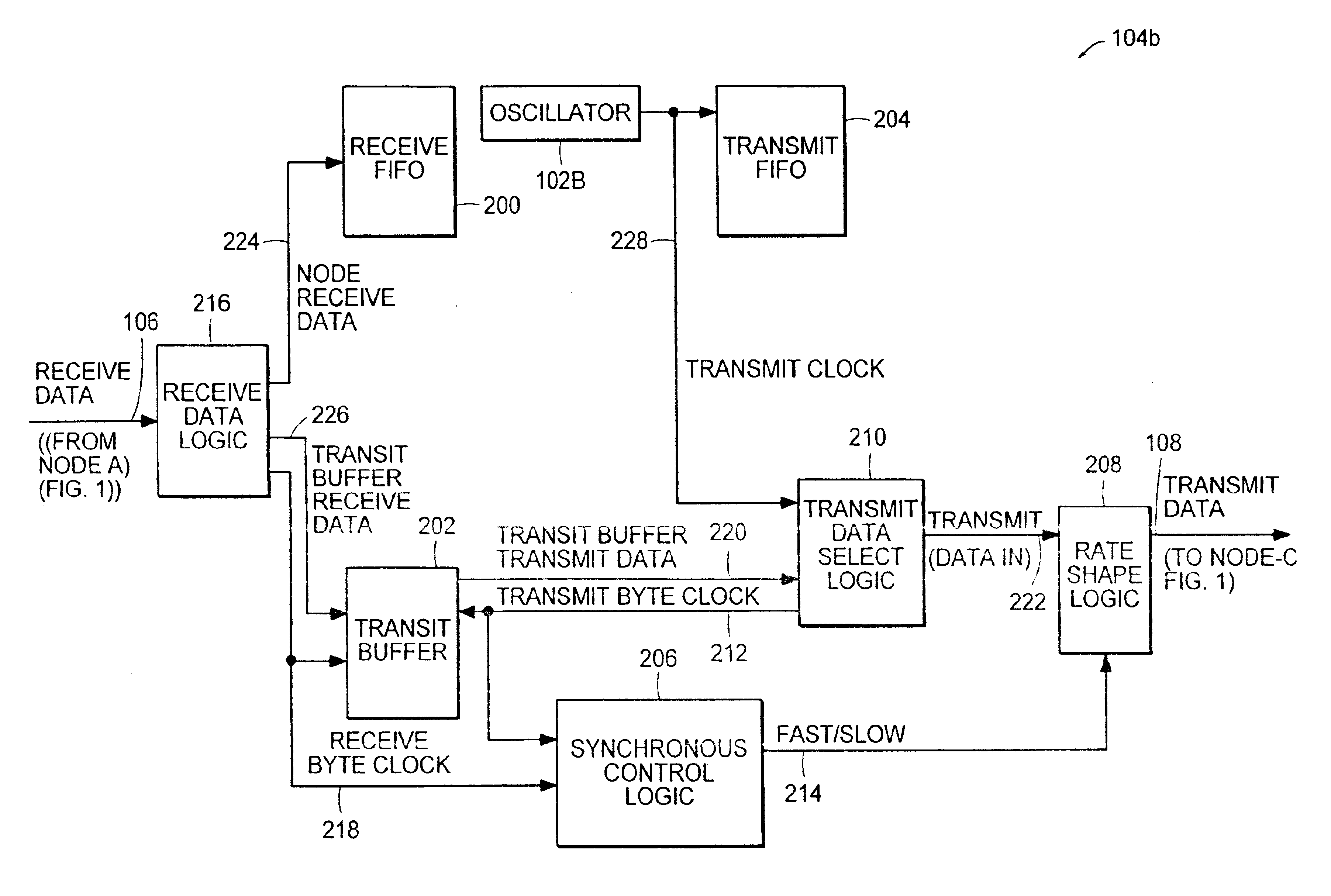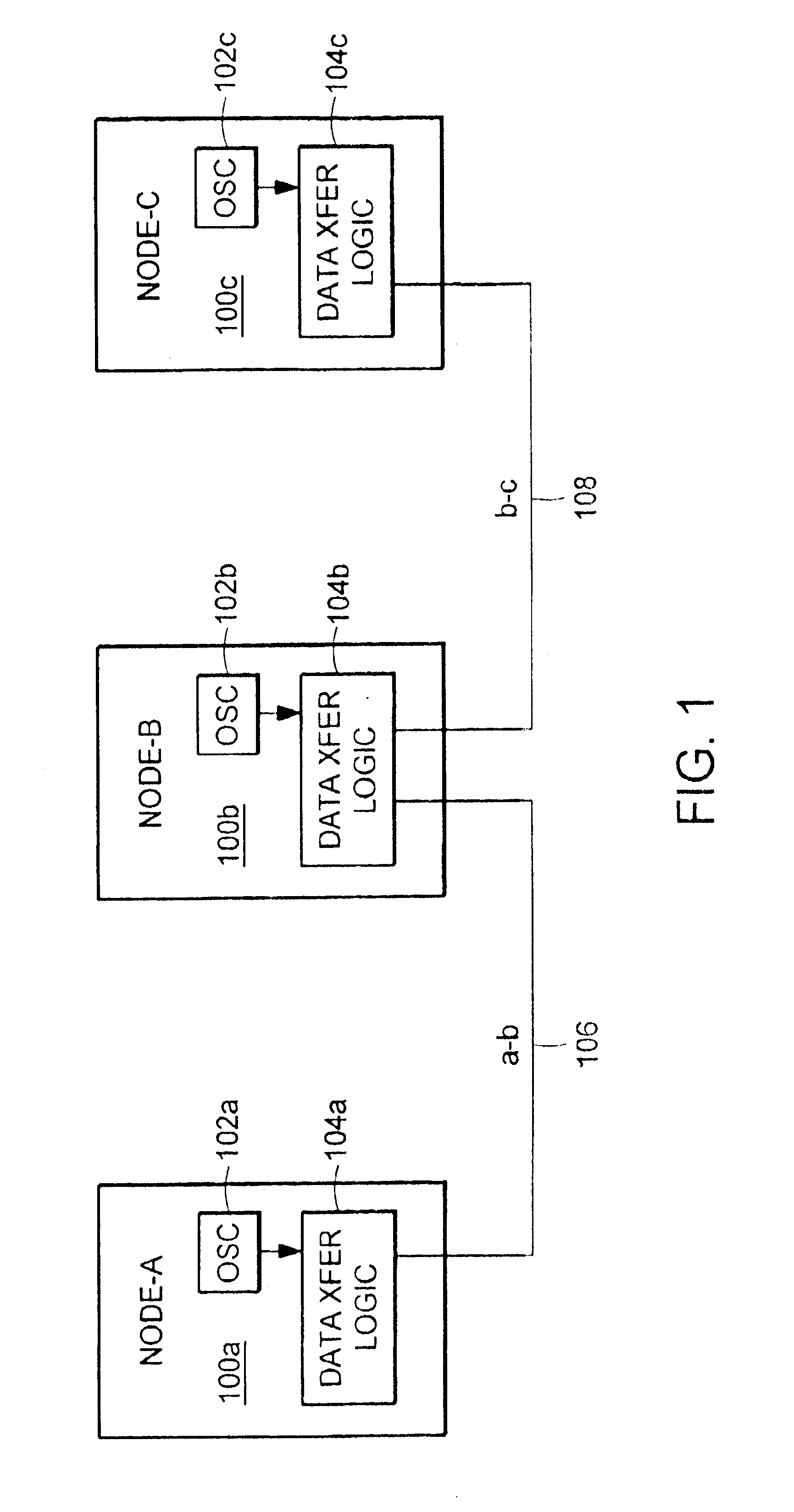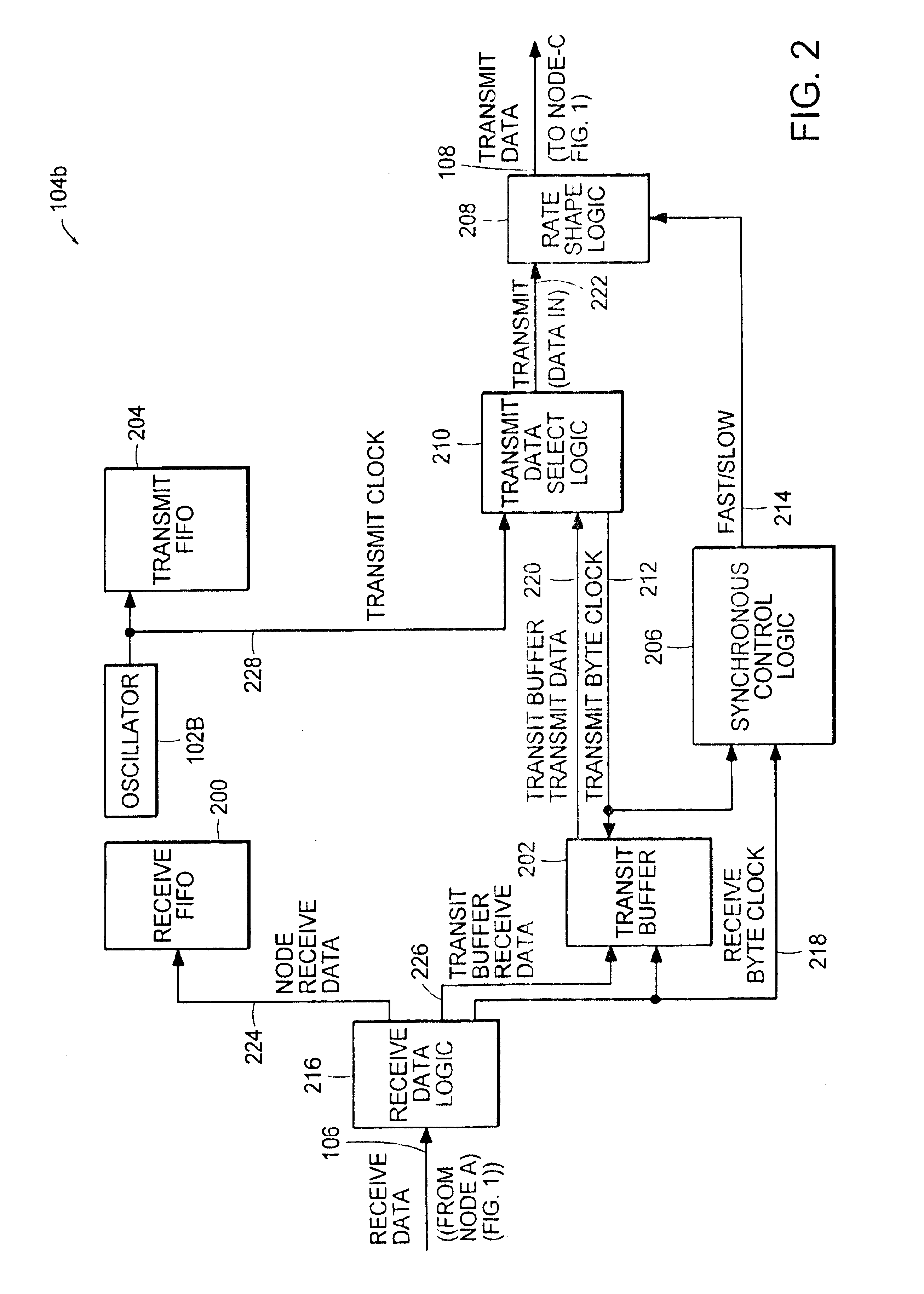Adaptive rate shaping to prevent overflow
a technology of adaptive rate and overflow, applied in data switching networks, instruments, frequency-division multiplexes, etc., can solve the problems of buffers not being able to prevent overflow, complex and expensive synchronization per bit, and cannot be used on all data networks, so as to eliminate the need for expensive and complex clock synchronization
- Summary
- Abstract
- Description
- Claims
- Application Information
AI Technical Summary
Benefits of technology
Problems solved by technology
Method used
Image
Examples
Embodiment Construction
[0016]FIG. 1 illustrates a computer network with three nodes 100a-c connected through computer links 106, 108. Each of the nodes includes an oscillator 102a-c and data transfer logic 104a-c. The nodes 100a-c connected to the network operate in “free-run” mode. That is, the receive clock is derived from the incoming receive data stream and the transmit clock is derived from the local oscillators 102a-c. The receive clock is encoded in the incoming receive data stream using techniques well known in the art, for example, Manchester encoding or 8B / 10B encoding.
[0017]Node_A 100a is connected to Node_B 110b through communications link a-b 106. Node_B 100b is connected to Node_C 100c through communications link b-c 108. In order to transmit data from Node_A 100a to Node_C 100c, the data flows through the data transfer logic 104b in Node_B 100b. The rate at which data is transmitted from Node_A 100a is dependent on the frequency of Node_A's oscillator 102a. The rate at which data is transmi...
PUM
 Login to View More
Login to View More Abstract
Description
Claims
Application Information
 Login to View More
Login to View More - R&D
- Intellectual Property
- Life Sciences
- Materials
- Tech Scout
- Unparalleled Data Quality
- Higher Quality Content
- 60% Fewer Hallucinations
Browse by: Latest US Patents, China's latest patents, Technical Efficacy Thesaurus, Application Domain, Technology Topic, Popular Technical Reports.
© 2025 PatSnap. All rights reserved.Legal|Privacy policy|Modern Slavery Act Transparency Statement|Sitemap|About US| Contact US: help@patsnap.com



